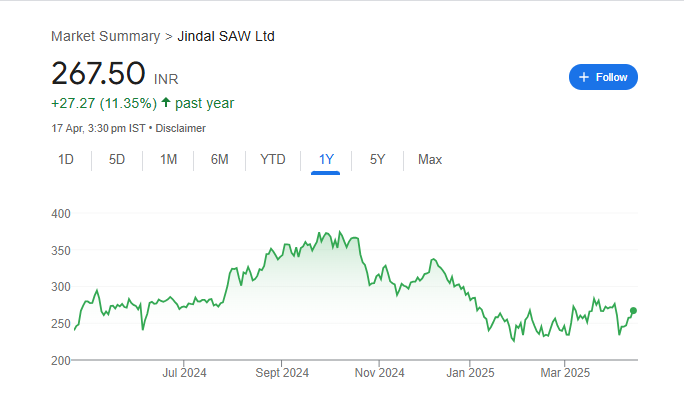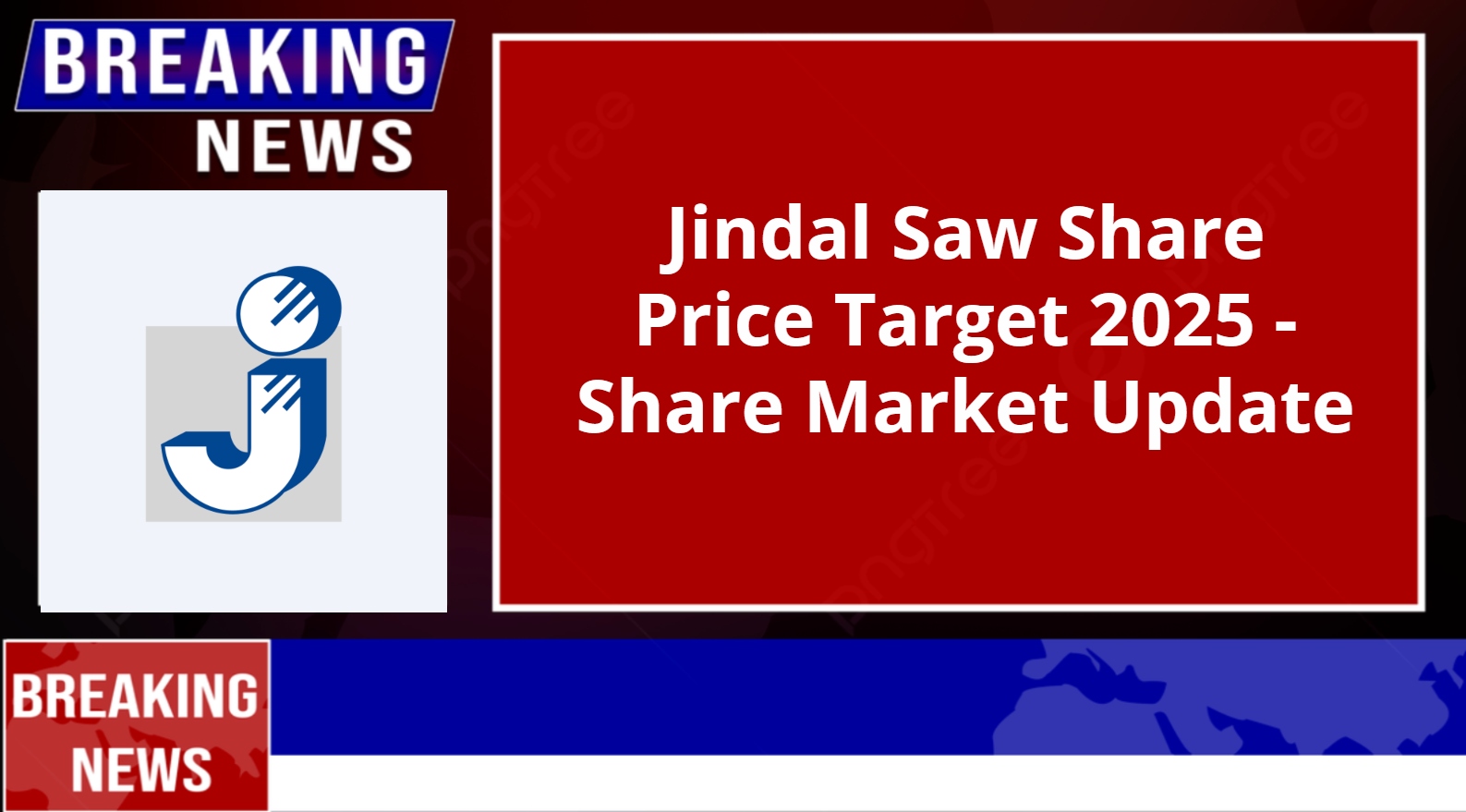Jindal Saw Share Price Target 2025 – Share Market Update
Jindal Saw Limited, established in 1984 and headquartered in New Delhi, is a leading Indian manufacturer and supplier of iron and steel products. The company specializes in producing a wide range of pipes and fittings, including Submerged Arc Welded (SAW) pipes, Ductile Iron (DI) pipes, seamless tubes, and pellets. These products serve various sectors such as oil and gas, water supply, wastewater management, and power generation. Jindal Saw Share Price on NSE as of 19 April 2025 is 267.50 INR.
Current Market Overview Of Jindal Saw Share
- Open: 257.90
- High: 271.70
- Low: 255.60
- Mkt cap: 17.05KCr
- P/E ratio: 8.76
- Div yield: 0.75%
- 52-wk high: 383.85
- 52-wk low: 217.65
Jindal Saw Share Price Chart

Shareholding Pattern For Jindal Saw
- Promoter: 63.28%
- FII: 15.73%
- DII: 4.7%
- Public: 16.28%
Jindal Saw Share Price Target Tomorrow
| Jindal Saw Share Price Target Years | Jindal Saw Share Price Target Months | Jindal Saw Share Price |
| Jindal Saw Share Price Target 2025 | April | ₹280 |
| Jindal Saw Share Price Target 2025 | May | ₹300 |
| Jindal Saw Share Price Target 2025 | June | ₹310 |
| Jindal Saw Share Price Target 2025 | July | ₹320 |
| Jindal Saw Share Price Target 2025 | August | ₹330 |
| Jindal Saw Share Price Target 2025 | September | ₹350 |
| Jindal Saw Share Price Target 2025 | October | ₹360 |
| Jindal Saw Share Price Target 2025 | November | ₹380 |
| Jindal Saw Share Price Target 2025 | December | ₹390 |
Key Factors Affecting Jindal Saw Share Price Growth
Here are six key factors influencing the growth of Jindal Saw’s share price:
1. Strong Profit Growth
Over the past three years, Jindal Saw has achieved a significant profit growth of approximately 69.9%, indicating robust financial performance and operational efficiency.
2. Consistent Revenue Increase
The company has demonstrated a steady revenue growth of around 27.7% over the past three years, reflecting its ability to expand its market presence and product demand.
3. Attractive Valuation Metrics
Jindal Saw’s current Price-to-Earnings (P/E) ratio stands at 8.4x, which is considered favorable compared to the estimated fair P/E ratio of 22.6x, suggesting that the stock may be undervalued and has potential for price appreciation.
4. Efficient Cash Flow Management
The company maintains a healthy cash conversion cycle of approximately 40 days and a cash flow from operations to profit after tax ratio of 1.77, indicating strong liquidity and effective cash management.
5. High Promoter Holding
With promoters holding about 63.28% of the company’s shares, there is a strong alignment of interests between the management and shareholders, which can contribute to stable governance and strategic decision-making.
6. Positive Analyst Outlook
Analysts have a favorable view of Jindal Saw, with a consensus rating of “Strong Buy,” indicating confidence in the company’s future performance and potential for share price growth.
Risks and Challenges for Jindal Saw Share Price
Here are six key risks and challenges that could impact Jindal Saw’s share price:
1. Fluctuating Steel Demand
Jindal Saw’s performance is closely tied to the steel industry’s health. Recently, domestic steel demand has been subdued due to reduced construction activities and project delays, leading to a 2.5% drop in iron and steel pipe sales in a recent quarter.
2. Stock Price Volatility
The company’s stock has experienced notable fluctuations. For instance, on March 25, 2025, the share price declined by 5.13%, underperforming the broader market. Such volatility can affect investor confidence and impact the stock’s attractiveness.
3. Debt Management Concerns
While Jindal Saw’s debt-to-EBITDA ratio is modest at 1.3, its EBIT covers interest expenses by only 6.5 times. This indicates that while debt levels are manageable, the company needs to monitor its financing costs to maintain financial stability.
4. Market Underperformance
Despite long-term growth, the stock has shown periods of underperformance. For example, on March 3, 2025, the share price dropped by 5.49%, reflecting broader sector challenges and indicating potential vulnerabilities to market trends.
5. Exposure to Sector-Specific Risks
Being part of the metals and mining sector, Jindal Saw is susceptible to risks specific to this industry, such as regulatory changes, commodity price fluctuations, and environmental concerns. These factors can adversely affect the company’s operations and profitability.
6. Mixed Technical Indicators
The stock’s performance relative to its moving averages presents a mixed picture. While it trades above short-term averages, it remains below its 100-day and 200-day moving averages, suggesting potential challenges in sustaining upward momentum.
Read Also:- Pratap Snacks Share Price Target 2025 – Share Market Update

